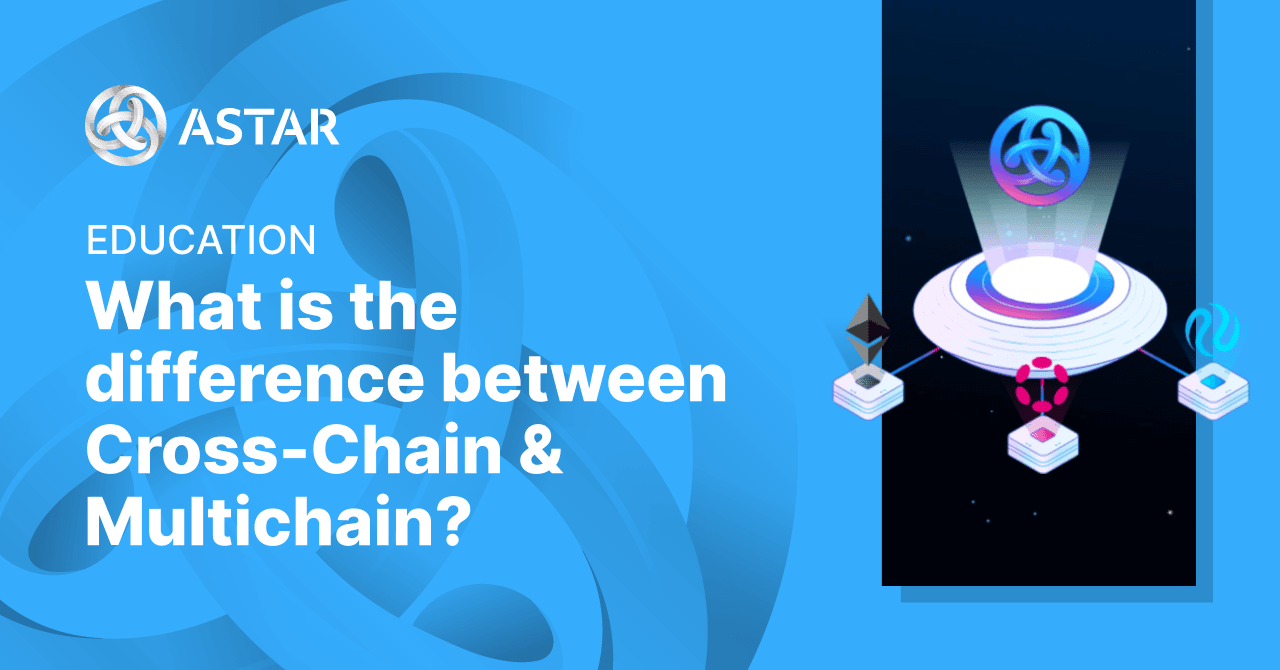Table of Contents
While the initial development of dApps focused on the Ethereum blockchain, that quickly changed as alternative ecosystems were launched, offering different approaches to solving the blockchain trilemma.
Nowadays, when building an application, one of the questions developers will have to ask themselves is how to face the plethora of existing web3 blockchain ecosystems that often don’t naturally communicate with each other. Or, put another way, lack interoperability.
The most common approaches are Multi-chain and Cross-chain development.
What does multichain mean?
When speaking of multichain dApps, we refer to applications that are running on different blockchains. For example, countless DeFi protocols in the Ethereum ecosystem have recently started creating instances of their apps on top of Layer 2s.
In practice, for developers, multichain means having to write various smart contracts for different chains and deploy them over multiple chains. This leads to capital inefficiency as liquidity now spreads across chains and increases friction as users have to switch between networks manually.
The lack of interoperability between native blockchains means that each contract has to manage its own state, making the development of a multichain dApp expensive. Additionally, you introduce risk by having separate contracts manage data which could lead to inconsistencies and eventually result in errors.
Nevertheless, there are benefits as well, such as tapping into the community of different ecosystems and leveraging their tech features. Additionally, security might be higher than when building cross-chain dApps.
What is Cross-chain?
Unlike multichain dApps, cross-chain apps have a single unified instance that users interface with. While cross-chain dApps consist of smart contracts on separate networks, what users see is one app. This is similar to how centralized exchanges enable anyone to move assets seamlessly between ecosystems without having to worry about switching networks or wrapping assets.
A big advantage of cross-chain architecture is that it removes silos between chains and makes all data, liquidity, and business logic composable with each other.
Cross-chain apps ensure that smart contracts, even when deployed on different chains, stay in sync to support their use case. One of the most common cross-chain applications are bridges which enable users to move assets across different chains.
Bridges implement different mechanisms to help assets move, such as:
- Lock and mint: When moving asset A from chain A to asset A on chain B, instead of actually moving the asset across a chain, the cross-chain protocol will lock token A on one chain and issue the user with a wrapped instance of the token on chain B. This means assets are not actually moving chains.
- Burn and mint: Similar to the above, with the difference that assets are burned on one chain before being minted on the other.
- Liquidity Pools: Instead of locking, bridges host liquidity pools that enable users to use assets on a different chain.
However, bridges have proven to be a constant target of hackers, and it’s not surprising that the top 5 DeFi hacks all were bridge hacks, as securing bridges is difficult because they tend to have central points of failure, such as multi-sig setup. Vitalik Buterin has also pointed out that increased interdependencies introduced this way could create “systemic contagion threatening the entire ecosystem.” (Src)
Other cross-chain applications are oracles that supply different ecosystems with reliable streams of data or indexing services such as The Graph.
Multichain vs. Cross-chain
The biggest difference between the two is the ability to communicate between different blockchains. In a typical multichain scenario, there is no communication between the instances of apps on different chains. Cross-chain, on the other hand, removes the barriers between silo’d chains but comes with increased risk.
Ultimately, multichain approaches might be inherently safer as each blockchain maintains its own validator set and security. In contrast, building a cross-chain solution is more straightforward and potentially lowers the friction for users. Fortunately, neither approach is mutually exclusive. For example, multi-chain dApps can connect with cross-chain bridges to still communicate with other chains. Or one develops in an ecosystem that is structured to support multichain while enabling chains to communicate, such as Polkadot.
Multichain in the Context of Astar
Astar is a parachain in the Polkadot ecosystem. Built by one of the creators of Ethereum, Polkadot is an ecosystem of multiple chains (parachains) connected by an underlying blockchain - the relay chain.
This architecture allows for parachains to focus on their respective use cases while inheriting security and decentralization from the relay chain. Polkadot was built based on the belief that the future of web3 is connected networks and not siloed chains. That’s one of the reasons we built Astar as a parachain.
When building on Astar, developers can create multichain dApps that can communicate with other chains in Polkadot thanks to XCM channels.
XCM
XCM is short for cross-consensus messages and is one of the superpowers of any parachain. It defines what kind of data can be transferred between chains and how they should interpret it. It enhances interoperability and opens up new levels of interactions. Unlike bridges, XCM supports the transfer of rich data so you can move any data between chains in a trustless, secure, and programmable manner - opening up the creation of multichain smart contracts, nft transfers, daos spanning chains, and the ability to pay fees between chains in any token.
With Astar, devs can build apps that are multichain and have cross-chain communication capabilities - removing the need to choose only one. You can learn more about how Astar works, empowering true multichain dApps here.

